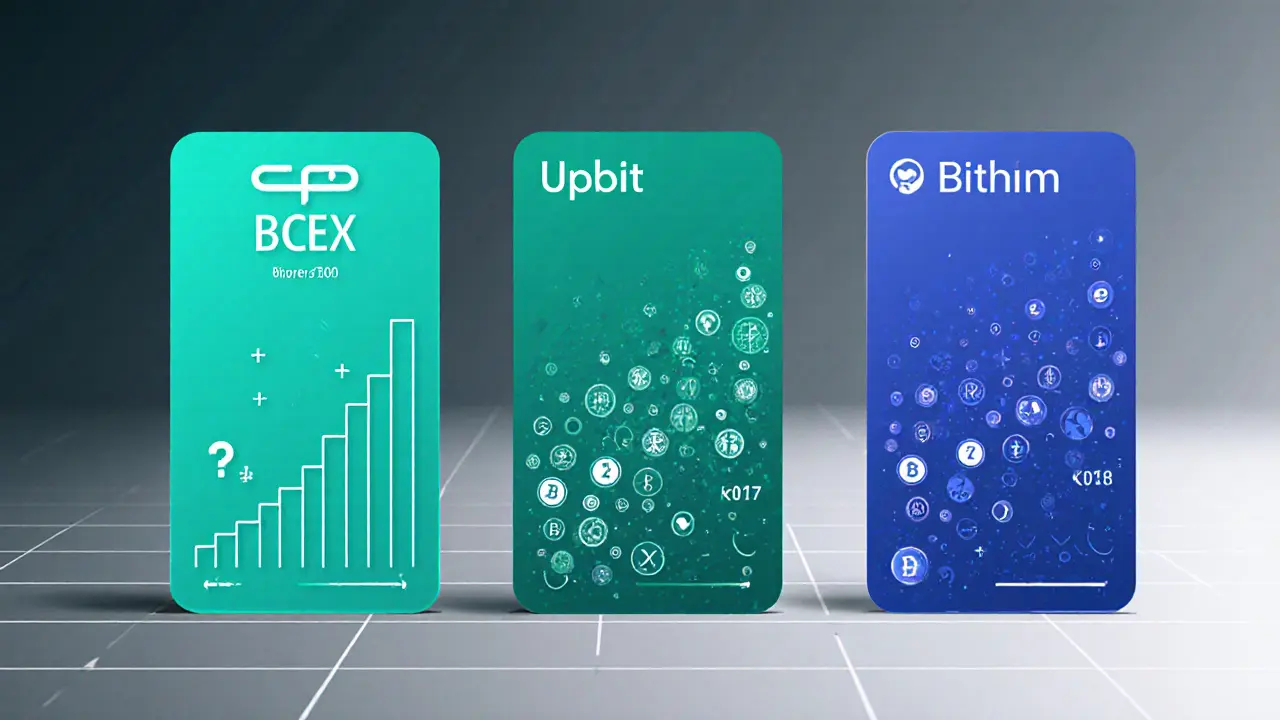BCEX Review: Fees, Security, and Licensing Explained
When diving into BCEX review, a detailed analysis of the BCEX cryptocurrency exchange covering fees, security, licensing, and usability. Also known as BCEX exchange assessment, it helps traders decide if the platform fits their needs.
This crypto exchange, any platform where users trade digital assets for fiat or other crypto operates in a crowded market. Its success hinges on three core pillars: licensing, security, and fee structure. Licensing tells you whether the platform meets regional regulations, security protects your assets from hacks, and fees directly affect your profit margins. Understanding each pillar lets you weigh BCEX against rivals like Koinde or Bitroom.
Why Licensing Matters for Any Exchange
The exchange licensing, official permission granted by financial authorities to run a crypto trading service is a red flag filter. A licensed exchange must follow AML/KYC rules, keep reserves, and undergo audits. BCEX claims to hold a license from a Caribbean jurisdiction, but the transparency of that permit varies. Compare that to platforms with clear US MSB registration or EU MiCA passport; the difference often shows up in user trust and insurance coverage.
Security is another non‑negotiable factor. The exchange security, measures like cold storage, two‑factor authentication, and intrusion monitoring determines how safely your coins stay on the platform. BCEX advertises multi‑signature wallets and regular penetration tests, yet independent audits are scarce. When evaluating BCEX, check if the exchange publishes proof of audits or bug bounty programs, because those signals often separate reputable services from risky ones.
Fees directly impact your bottom line. The exchange fees, trading commissions, withdrawal charges, and hidden costs that users pay on BCEX are tiered based on volume, with a base maker fee of 0.15% and taker fee of 0.25%. Withdrawal fees for Bitcoin hover around 0.0005 BTC, while ERC‑20 tokens cost a flat $5. Compare that to competitors: some offer zero‑fee promotions but charge higher spreads. Knowing the exact fee schedule helps you calculate net profit before you place a trade.
Putting these pieces together, the BCEX review encompasses exchange security, licensing, and fee analysis. A strong licensing framework often forces better security practices, which in turn can justify higher fees because users pay for safety. Conversely, lax licensing may lead to lower fees but higher risk. This interplay forms the core of any thorough exchange assessment.
Beyond the basics, the review also touches on user experience, customer support, and available trading pairs. BCEX supports over 120 pairs, mostly on the Binance Smart Chain, and offers a mobile app with basic charting tools. Support is reachable via live chat, but response times vary. For active traders, the presence of advanced order types (limit, stop‑limit) matters; for beginners, a clean UI and clear onboarding are key.
Readers will find the upcoming articles break down each pillar in depth. One post walks through the US MSB and BitLicense process, another compares BCEX fees with Koinde’s flat‑rate model, and a third dives into security audits of various exchanges. Together, they give a full picture of where BCEX stands in the current crypto landscape.
Now that you understand the main factors shaping a BCEX review, you’re ready to explore the detailed guides below. Each article adds a layer of insight—whether it’s licensing nuances, fee calculations, or security best practices—so you can make an informed choice before depositing any funds.

BCEX Korea Crypto Exchange Review: What Traders Need to Know
Mar 1, 2025, Posted by Ronan Caverly
A detailed BCEX Korea crypto exchange review covering features, actual trading volume, regulatory doubts, comparison with local rivals, and a due‑diligence checklist for traders.
MORESEARCH HERE
Categories
TAGS
- decentralized exchange
- crypto exchange review
- cryptocurrency
- crypto coin
- CoinMarketCap airdrop
- smart contracts
- tokenomics
- cryptocurrency exchange safety
- crypto exchange
- cryptocurrency airdrop
- crypto airdrop
- cryptocurrency exchange
- crypto airdrop guide
- blockchain token distribution
- DeFi
- crypto exchange scam
- crypto airdrop 2025
- Ethereum
- cross-chain interoperability
- ERC-20
